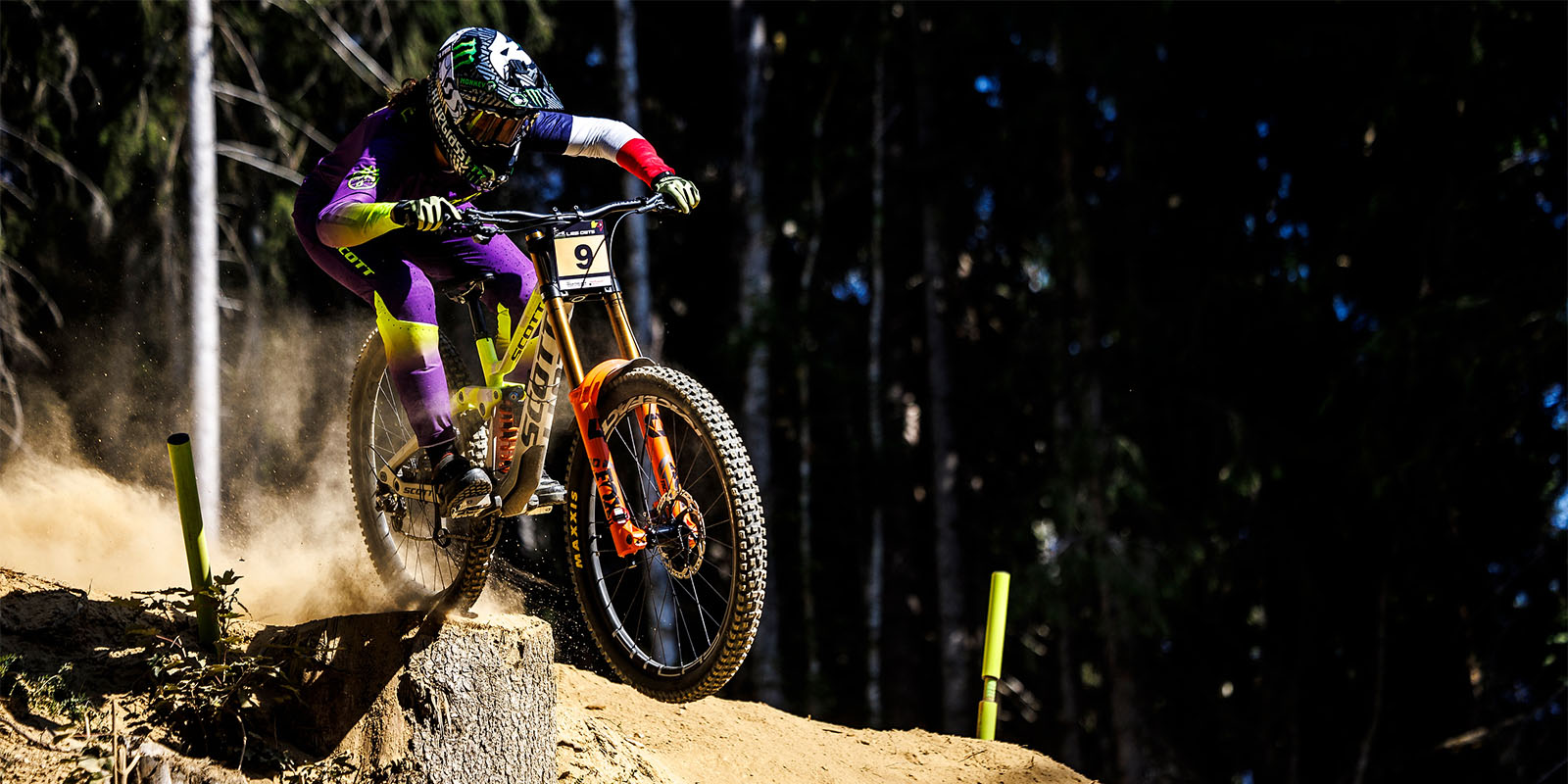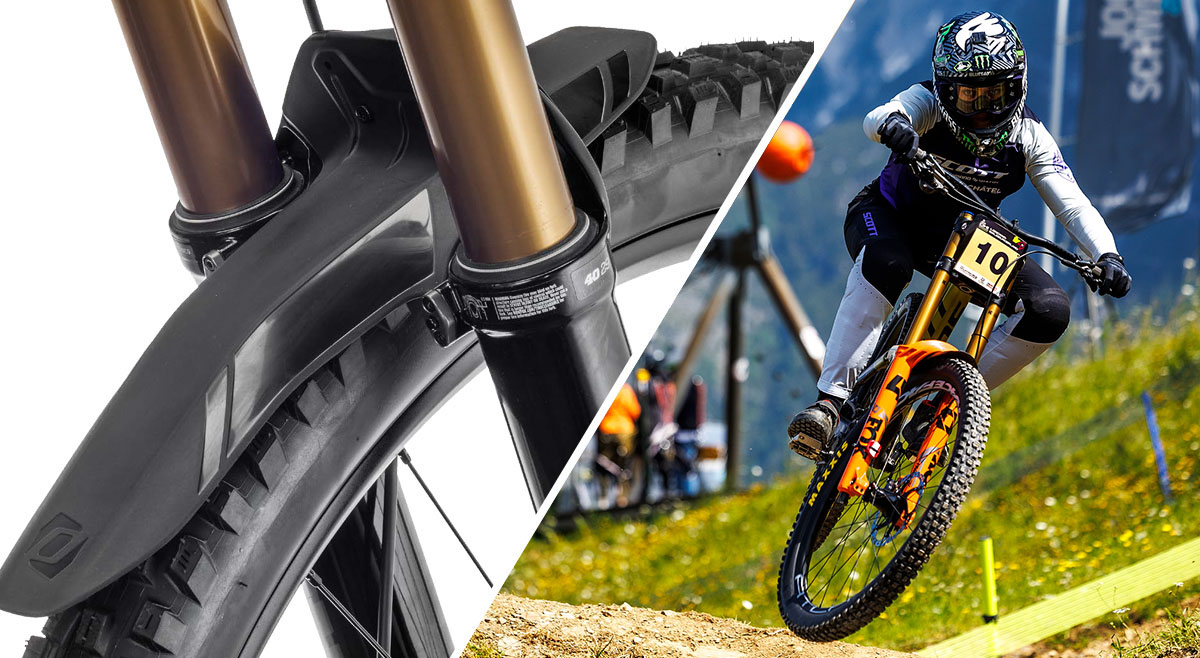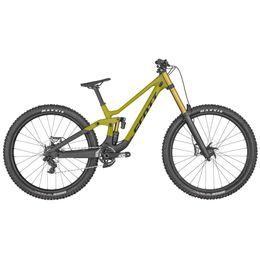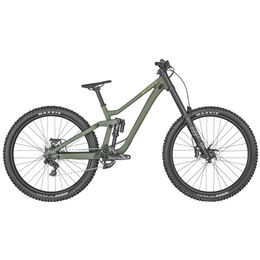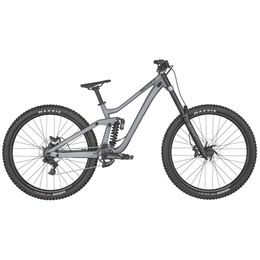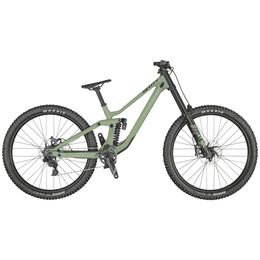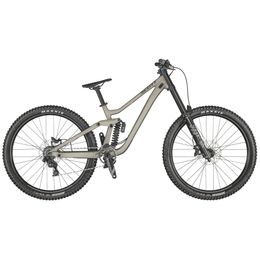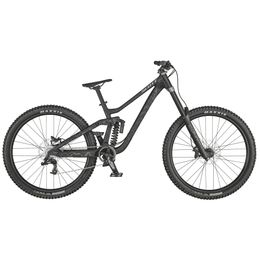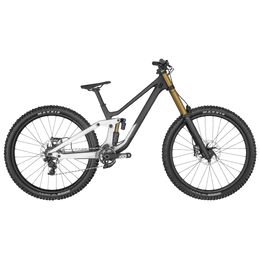
The Gambler Tuned was designed for one thing and one thing only: pure, unadulterated speed. We made it to get you to take lines you’d never thought imaginable, to make you want to go to the bathroom before your race run - twice. We made it so that when you drop out of the start gate, the only aspect holding you back will be, well, you. Taking years of racing development and mixing it with our carbon expertise, this bike is our answer to the needs of white-knuckle downhill racing.

Pure speed
So, how did we get there? Considering the bike as a complete system we broke things down into four main factors:


Construction
First, we will focus on frame construction. It is here where our renowned carbon expertise is evident.

Lightweight
Let’s get straight to the point – we wanted this bike to be light. If you look at our racing pedigree across other disciplines, we aim to always give our athletes as many competitive advantages over other brands as possible. With the weight advantage, we’ve become experts over the years, and can finally apply this expertise to a downhill race rig. The Gambler Tuned’s carbon frame with hardware comes in at 2650g. Taking everything we’ve learnt from developing frames like the Ransom, we saved weight everywhere we could. We even developed a new method to manufacture an ultra-light and strong linkage that we can tune for stiffness to a level not achievable with alloy – it only weighs 160g. The Gambler’s new suspension design allows for a super-light frame package. Using our Evolap layering technology as well as an adapted version of our down tube shock mount construction, we’re able to achieve incredible weight figures for a downhill frame.
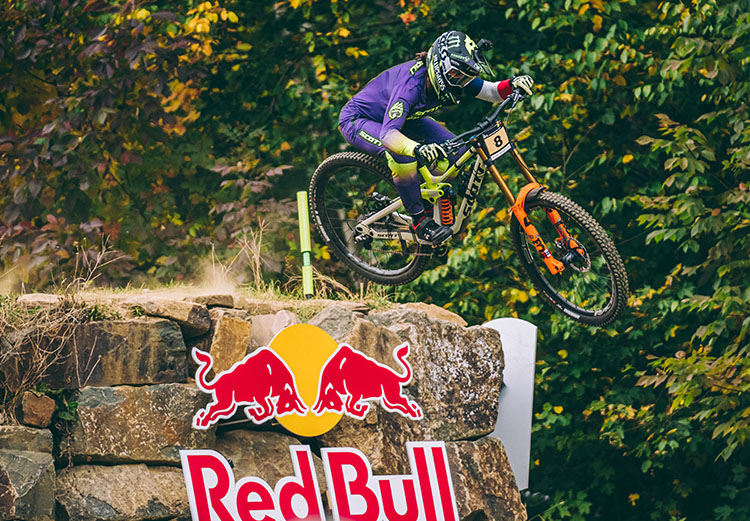
Stiffness
However, carbon design and engineering go beyond just weight, as when we set a weight target, we set up a stiffness target as well. We worked closely with our athletes to determine a good blend of stiffness and flex, aiming to give them a tool that would be proficient on all World Cup tracks and in all conditions. Working with various materials and layup techniques we were able to achieve a torsionally stiff frame for responsive behavior but with the right level of lateral flex to provide compliance and comfort on difficult sections of track. How’d we do this? In a sense, we followed a learn-by-doing approach. By taking concepts too far in certain directions, we were able to eliminate certain ideas, while refining ones that worked. We made prototypes and we took them to the races. By testing bikes which were too stiff in race situations as well as ones that were too soft, we saw first-hand all the positives and negatives chassis stiffness can provide. We then took it a step further and bench tested these same frames as well as those of competitors helping us to identify our sweet spot.
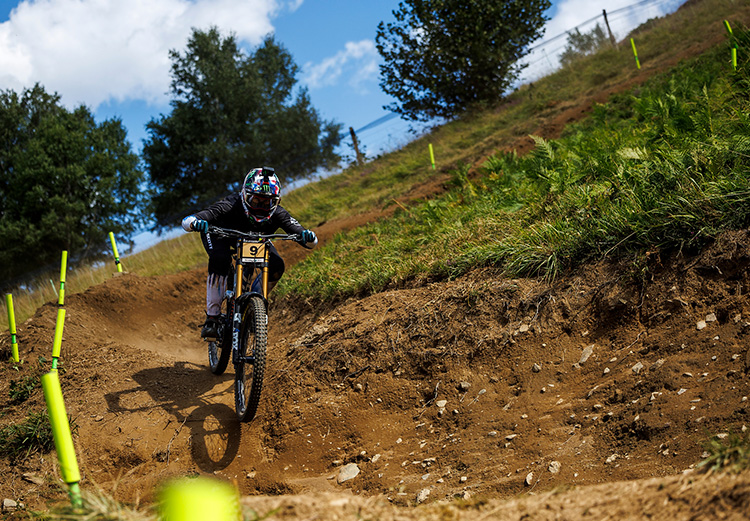
Like with the Genius and the Ransom, the Gambler was designed with two main construction zones – a “stiffness zone” and a “lightweight zone.” Through clever layering and reinforcement in certain zones we obtain the idea of stiffness between the head tube and the rear wheel axle via a path following the down tube and the chain stays - we call this the stiffness backbone. Designs like the Gambler, which leave the top and down tubes free of shock loads, allow us to fine-tune flex and create the opportunity to optimize chassis compliance. Part of the magic mix is NOT putting extra forces on the down tube and top tube with shock mounts or linkage pivots. Thanks in part to this design we were able to make a lighter frame with stiffness AND flex in all the right spots.
Strength
Even though we were able to get to our low weight target, we didn’t compromise on our strength target. This is a downhill bike after all, and it needs to be able to roll with the punches. We test all our bikes to our own very high standard, which sits well above industry norms, and with the Gambler we wanted to make sure that the bike could withstand the forces a professional athlete can exert during a World Cup season. There is no point in making a lightweight, fast bike if it isn’t a strong bike.

ADJUSTABILITY
Our downhill bikes have always pushed the boundaries of adjustability. Both a rider and a bike need to be able to adapt to tracks, weather conditions and choice of shock (air or coil). The Gambler allows you to switch between wheelsizes without changing any other components on the bike.
Chain stay length can also be adjusted, independent of wheelsize choice. Short with 29”, sure thing. Long with 27.5? Yep, that too. The Gambler also comes with spare angled headset cups, so that you can adjust head angle relative to wheelsize, fork choice etc.
We also have a 4-way chip to allow not only bottom bracket height adjustment relative to wheelsize, but more importantly for geometry/kinematic tweaks depending on tracks, shocks or rider preference. We want the bike to be optimizable for each shock and rider given the track.
All this adjustment allows us to focus on balance. And by balance, we mean on the perfect combinations to find traction. Geometry and shock curve options help get a rider’s center of mass in the perfect spot between the wheels for optimum levels of balance and traction. However, as race tracks change, this balance point changes, and not all bikes can change with it – we wanted to be able to do so.
For instance, a bike with geometry for a steep track will roll slowly and push wide in turns on a flatter track, whereas a bike set up for flatter tracks will make it difficult for a rider to keep their center of gravity far enough back for steep tracks.
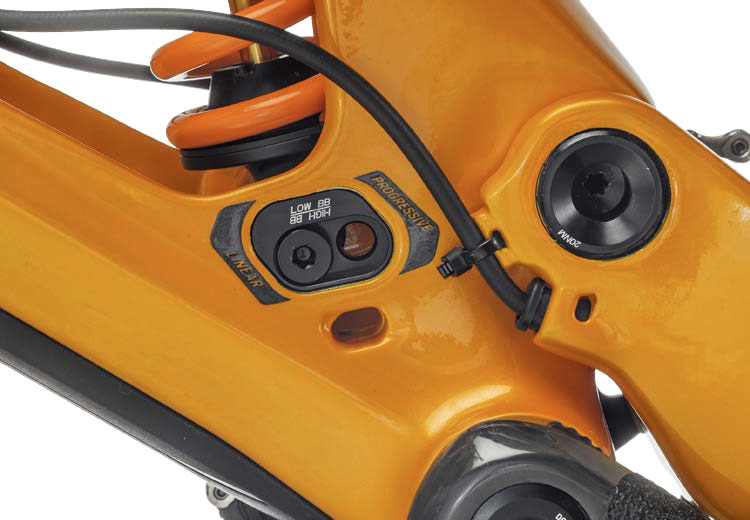
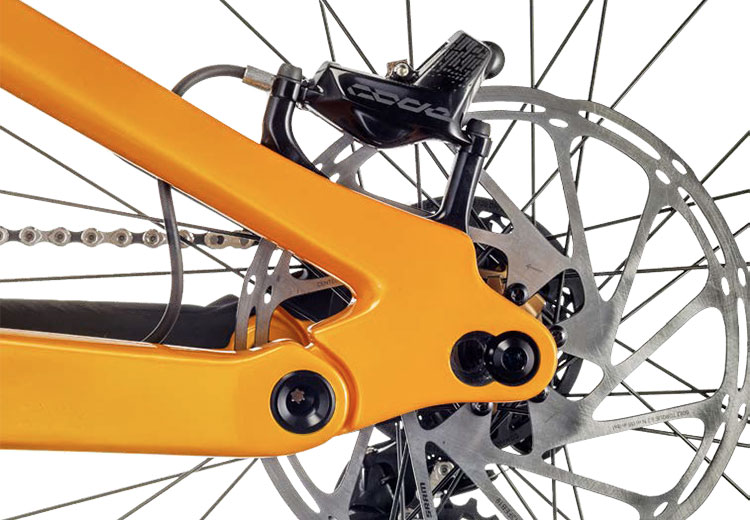
WHEELSIZE OPTIONS
The Gambler was developed to be fully compatible with both 29” and 27.5” wheels. It can be set up for ruthless World Cup speed or for hitting the world’s biggest jumps, and to be the best at both – you choose.
The bike is also incredibly well balanced. We wanted the ultralight frame to have geometry that is still very stable at speed, but also super playful, something we are proud to have achieved. We blend both old school and new school cool ratios with the Gambler platform - it’s the perfect combination of new longer stable geometry combined with ultra-lightweight keeping the bike both stable at high speeds and lively and playful at slower speeds.
CHAINSTAY & BB ADJUST
We wanted a better-balanced and faster bike in more situations with easy-to-tune suspension creating even more grip. Thanks to the 4-way adjustability on the lower shock mount we can better balance the riders’ needs on any track. Here are some examples of setups that we use from race to race:
This setup helps you carry speed easily through flat sections and keeps the front tire gripping in unsupported turns with more rider weight up front.


The perfect setup mixing stability at high speeds with speed-carrying and terrain-pumping ease.


A more active beginning stroke suspension gives you incredible grip and a more rearward weight bias to handle steeper terrain.


The low, slack and short chain stay setup puts your weight back in just the right spot providing incredible grip when things get super steep.


These are just some basic guidelines, which of course can be adjusted based off rider preference, riding style, intended results etc.

Syncros TRAIL DH FENDER
Our Syncros Trail DH Fender has been specifically designed to fit with the Fox 40 and 49 downhill forks via the two sets of mounting holes. Fully customizable according to needs, mount the full set or either front or rear only depending on riding conditions.
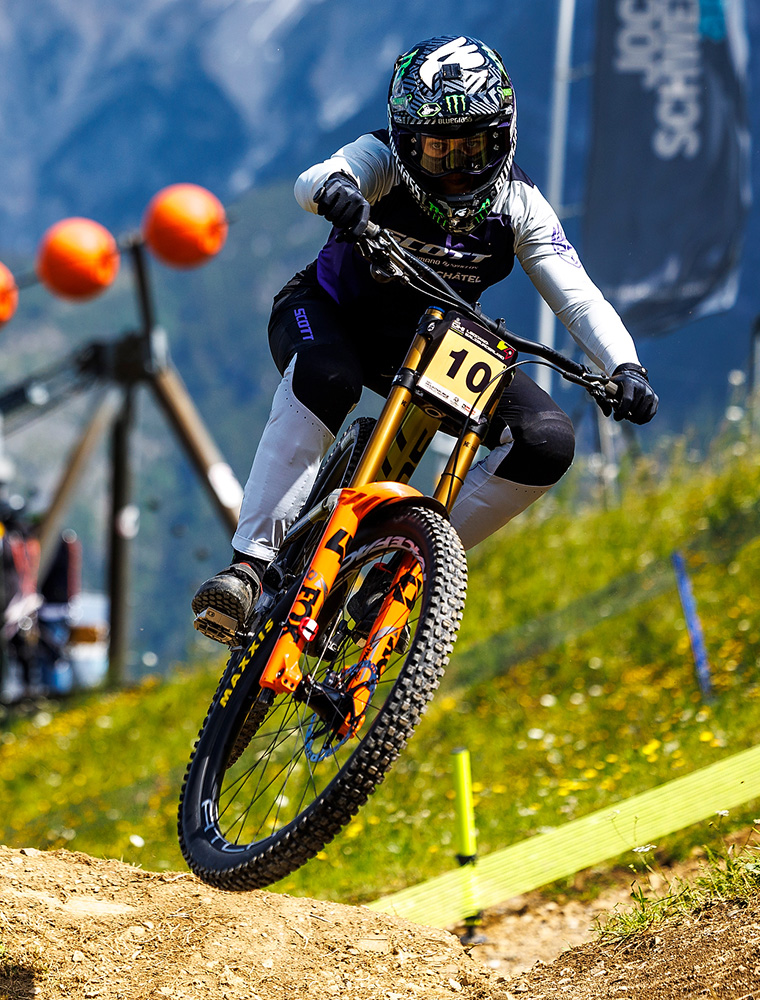
INTEGRATION
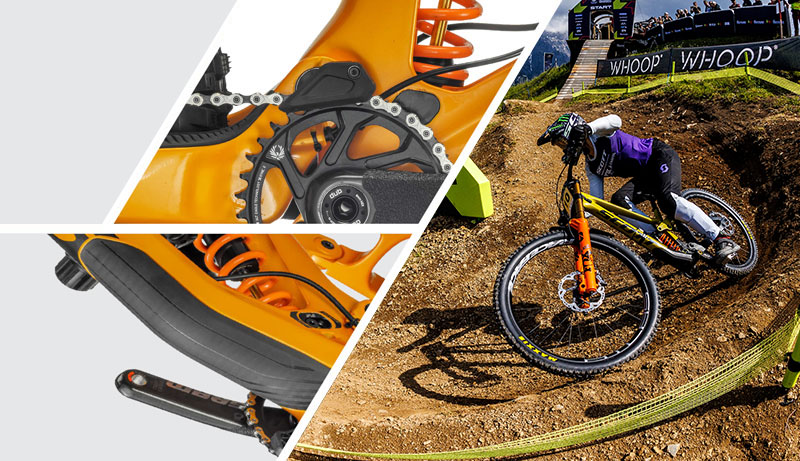
Integration is becoming a more important topic at SCOTT as time goes by. We spent a lot of time here looking at previous concepts and asking ourselves if we really wanted to grandfather into the bike performance compromises due to old standards – we didn’t. Enter our proprietary chain guide / bash guard solution.
FRAME PROTECTION
The frame comes well protected with clever frame protection in key areas. We find that frame protection is a complete aspect of any frame project – the bike needs to be at its best out of the box and for a long period of time. We wanted to protect the bike in a way that also kept it quiet: with soft rubber chain stay, seat stay and DT protectors, as well as fork bumpers and neatly routed cables, the Gambler rumbles down the track, you just don’t hear it.
PROPRIETARY CHAIN GUIDE
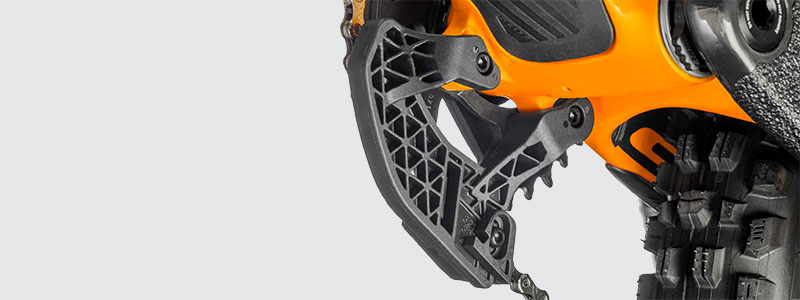
It seems like it shouldn’t make a huge difference on the bike, but it turns out it does. We even joke that it dictated the design of the entire bike. Why make this a proprietary piece? Chain devices are normally made to work with many different bikes and are therefore compromised. We only need to make it work for this one frame and a specific range of chainring sizes, so it can be easier to set up, better performing, lighter and allows us to gain some advantages on the frame construction, further reducing weight and increasing reliability/durability. Historically, designing around a chain guide / bash guard was akin to designing around a front mech – not ideal. They require a heavy, in-molded alloy mount in the frame that can bend under impact, and leave threads in the frame that can be damaged. These would restrict the frame's main pivot width and chain stay shape. In addition, the chain guide and bash guard were connected by a backplate, further increasing weight.
With our design, we no longer have in-molded alloy mount, nor do we have threads in the frame. More importantly, we’re able to design a wider main pivot, making for a stiffer connection and better bearing life. We’ve been able to optimize our chain stay shape, helping us to better maintain stiffness and strength. It is easier to set up and adjust and it is lighter.
We use built-in rubber shock absorbers with the bashguard, further reducing the potential for frame damage. Finally, as the bashguard and chain guide are separate pieces, should either get damaged, you don’t need to replace the entire system, just the piece itself.
GEOMETRY
Compared to previous Gambler platforms, we now offer 4 sizes – S, M, L and XL. All sizes have been upsized and modernized with regards to geometry, providing an option for riders of all sizes. We don’t need to tell you any more about how the bike’s geometry is dialed for the job it has, but we do have some interesting points to mention. Saddle position is often very critical for racers, especially shorter ones. If a saddle CAN give enough extra tire clearance to lower, or slide back the saddle by 10mm, it can make a huge difference. With the Gambler, we steepened the seat tube angle on the small and medium-sized frames, which allows smaller riders to keep their saddle low and to avoid the dreaded tire buzz. For larger riders, we made sure to keep the saddle out of the leg area leaving riders free to move around in the air, in corners etc.
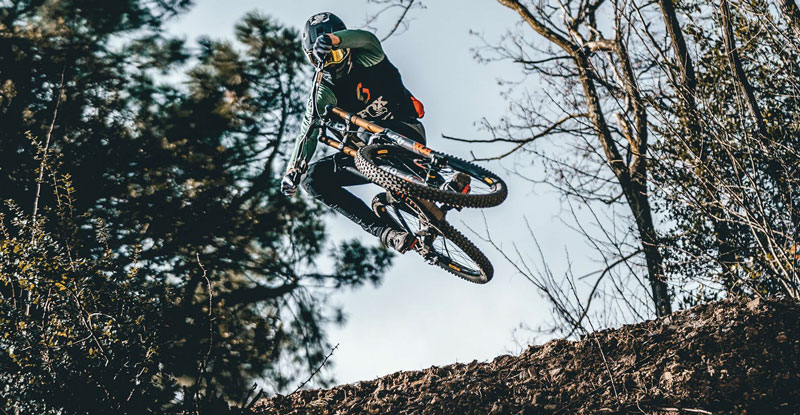
| S/900 LOW BB SETTING |
S/700 HIGH BB SETTING |
|||
| A - HEAD TUBE ANGLE | 62.9° | 63.2° | ||
| B - HEAD TUBE LENGTH | 110.0 mm | 4.3 in | 110.0 mm | 4.3 in |
| C - TOP TUBE HORIZONTAL | 537.4 mm | 21.2 in | 535.7 mm | 21.1 in |
| D - STANDOVER HEIGHT | 719.3 mm | 28.3 in | 712.3 mm | 28.0 in |
| E - BB OFFSET | -24.2 mm | -1.0 in | -8.5 mm | -0.3 in |
| F - BB HEIGHT | 346.4 mm | 13.6 in | 342.6 mm | 13.5 in |
| G - WHEEL BASE | 1207.6 mm | 47.5 in | 1212.8 mm | 47.7 in |
| H - BB CENTER TO TOPTUBE CENTER | ||||
| I - BB CENTER TO TOP OF SEATTUBE | 405.0 mm | 15.9 in | 405.0 mm | 15.9 in |
| J - SEAT ANGLE | 66.8° | 67.2° | ||
| K - CHAINSTAY | 438.7 mm | 17.3 in | 435.0 mm | 17.1 in |
| L - REACH | 400.2 mm | 15.8 in | 405.0 mm | 15.9 in |
| M - STACK | 636.2 mm | 25.0 in | 631.3 mm | 24.9 in |
| N - STEM LENGTH | ||||
| O - TRAIL | 130.5 mm | 5.1 in | 119.0 mm | 4.7 in |
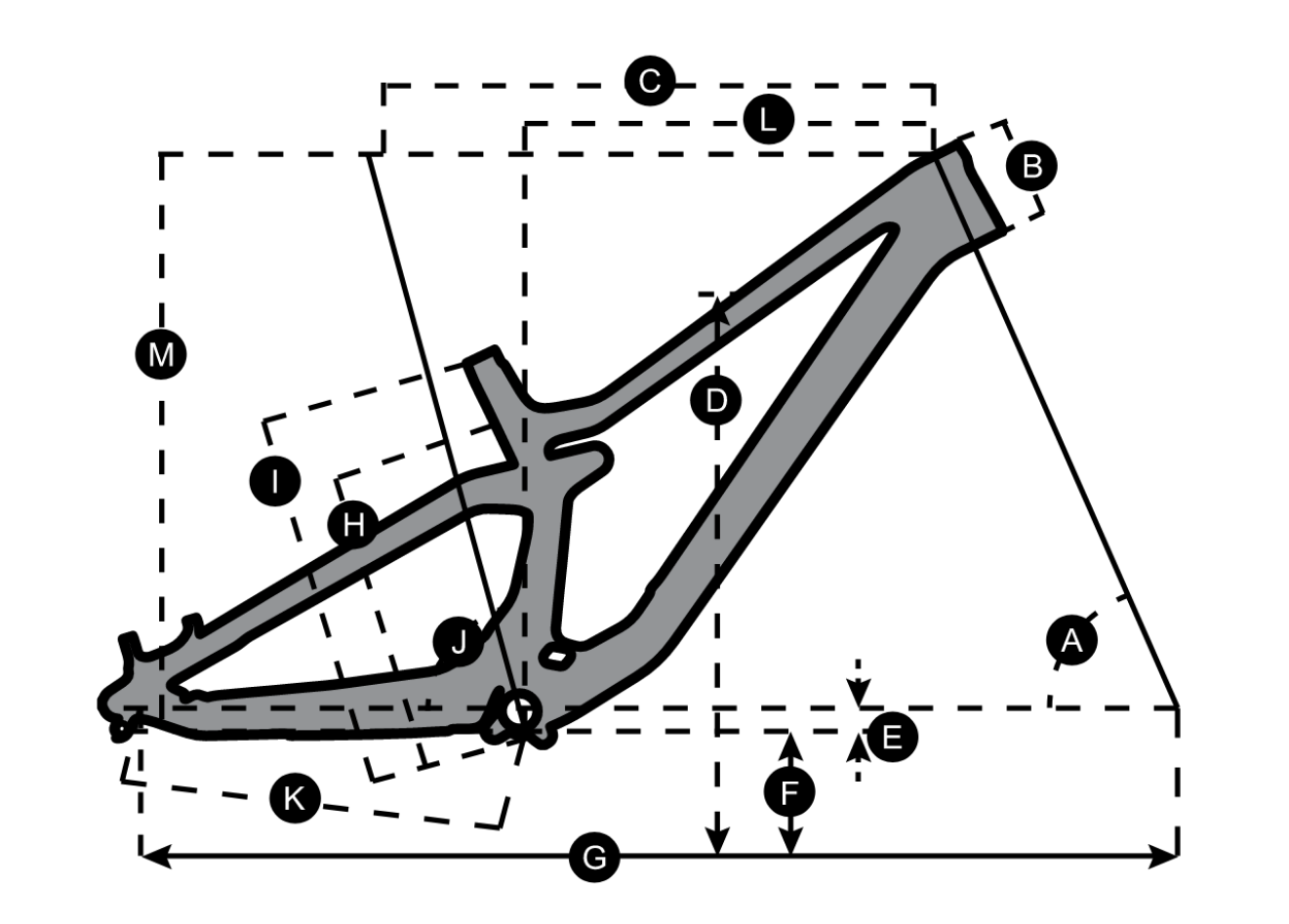
GAMBLER ALLOY
When designing the Gambler Alloy, we didn’t want to just recreate the carbon bike in alloy form. We wanted to design a standalone Gambler that has the quality to be raced and ridden at the highest level. We also wanted to do so in a way that is attainable for everyone.
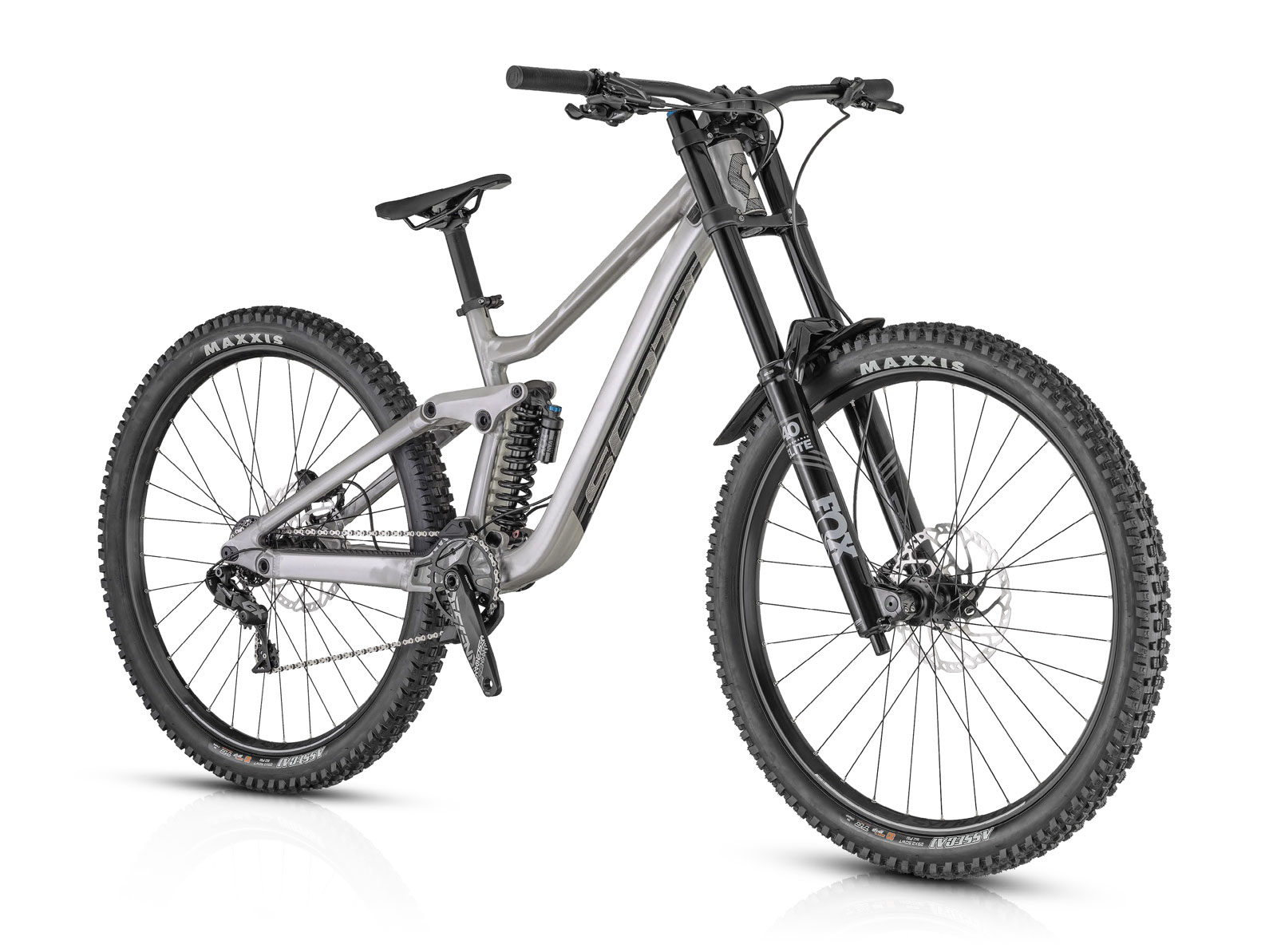
LIGHTWEIGHT
We also wanted this bike to be light, and to have desired stiffness / flex values like the carbon version. By working cleverly with aluminum, we gave ourselves a very aggressive weight target that we were able to hit without risking any sacrifice in terms of strength / functionality. Over the past few years, we’ve advanced our alloy development techniques just as much as we have with carbon. The idea with the Gambler was to take away all material that wasn’t needed. Through optimizing forged parts, and utilizing as much tube to tube construction as possible, we were able to save over 600g compared to the previous Gambler. There is 26.4% less forged material volume on this Gambler compared to the previous Alloy model.
This is what that looks like comparing the previous Gambler Alloy and current version:
Our current main frame has fewer tubes, and fewer welds. We also optimized BB forging to save weight.
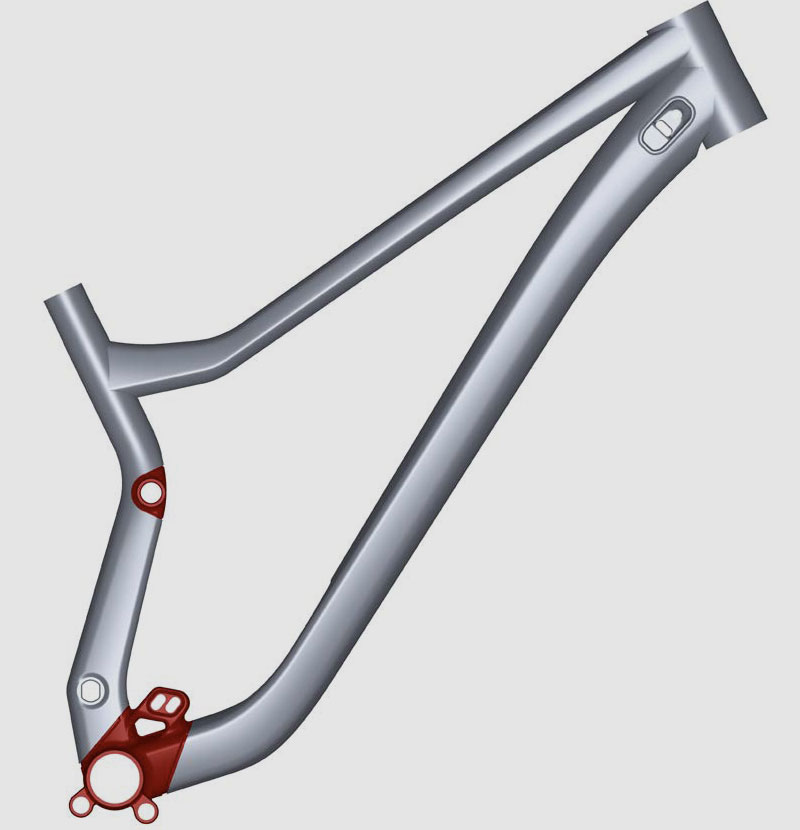
This main frame had a seat tube comprised of three pieces. Two tubes, and one forged part with two welds.
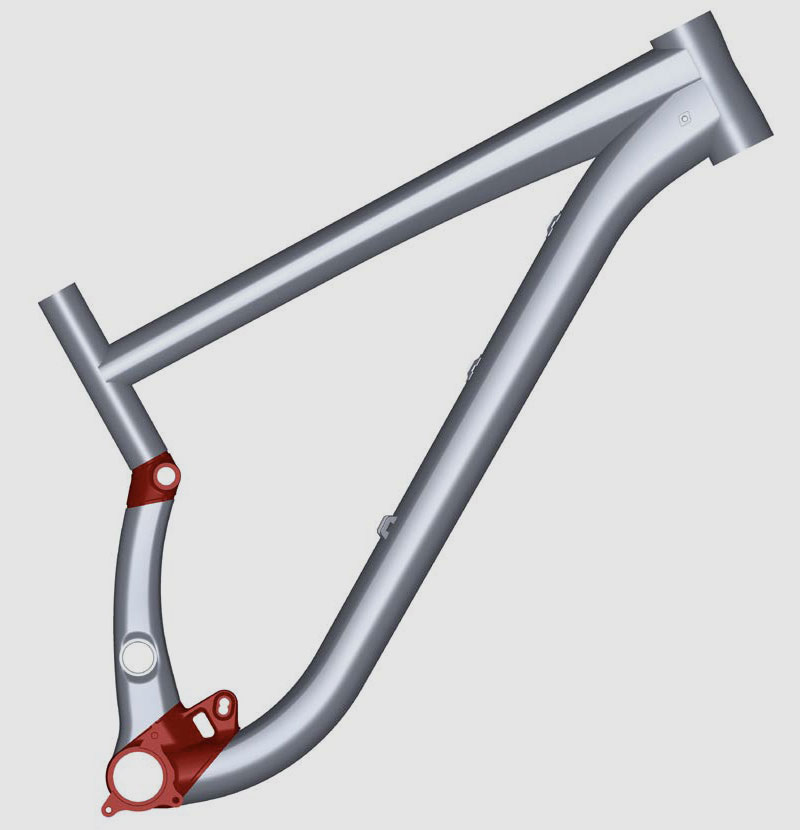

CONSTRUCTION
Stiffness is a hugely important topic for all downhill bikes, whether carbon or alloy. We really wanted to have an alloy version that performed as well as the top-notch carbon bike. While carbon is a very tunable material compared to aluminum, once we hit our strength values we were able to play with tube shapes and wall thickness to get a frame that resulted in nearly identical stiffness/flex ratios to the Tuned version. This is also the case for the Hybrid Carbon/Alloy Gambler 910. Using our stiffness backbone concept that is present on all our full suspension MTBs, we avoid putting any loads on the top and down tube. All loads sit on the forged parts, which also allows us to not overbuild seat stays, further reducing weight.
ADJUSTABLE
The Gambler Alloy does share several attributes with the Carbon version: it is just as adjustable, it has just as much integration, can fit both the 29” and 27.5” wheelsizes, and has the same exact suspension kinematic and sizing/geometry figures.

